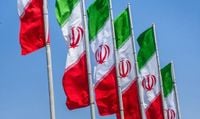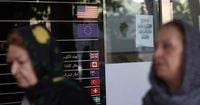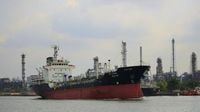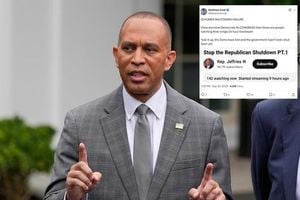The United Nations Security Council’s “snapback” sanctions on Iran have returned, rekindling fierce international debate and setting the stage for a new chapter in the long-running nuclear standoff. The reimposition of these sanctions—triggered by France, Germany, and the United Kingdom (the so-called E3) on August 28, 2025—has sparked sharp disagreements among world powers, with Russia and China openly rejecting the legitimacy of the move and vowing to maintain business as usual with Tehran. As the dust settles, the impact of these revived restrictions is rippling through global oil markets, diplomatic circles, and the already fragile Iranian economy.
On October 1, 2025, Russia’s ambassador to the United Nations, Vassily Nebenzia, made Moscow’s position crystal clear at a press conference marking the start of Russia’s presidency of the Security Council. According to Press TV, Nebenzia declared, “We do not recognize the snapback as coming into force.” He went on to criticize Western countries for what he called their “serial violations” of Security Council Resolution 2231, which had endorsed the now-fractured 2015 Iran nuclear deal, officially known as the Joint Comprehensive Plan of Action (JCPOA). Nebenzia accused Western powers of forfeiting a diplomatic solution by pushing the snapback, saying, “So we'll be living in two parallel realities because for some, ‘snapback’ happened. For us, it didn't. That creates a problem. How will we get out of it? Let's see.”
The snapback mechanism itself is designed as a diplomatic safety valve, allowing any party to the JCPOA to restore UN sanctions if Iran fails to meet its commitments. But as The Soufan Center’s IntelBrief reported, the United States—having withdrawn from the JCPOA in 2018 under President Trump—could not activate the snapback alone. Instead, the E3 took the lead, citing Iran’s enrichment of uranium to 60 percent purity (far above the JCPOA’s 3.5 percent cap) and its accumulation of 400 kilograms of highly enriched uranium, enough for nine nuclear weapons if further refined to weapons-grade. Iran had also barred International Atomic Energy Agency (IAEA) inspectors from its nuclear sites after Israeli and U.S. airstrikes in June 2025.
On September 28, 2025, U.S. Secretary of State Marco Rubio announced that “the United Nations reimposed sanctions and other restrictions pursuant to six UN Security Council Resolutions—1696, 1737, 1747, 1803, 1835, and 1929—based on Iran’s continuing ‘significant non-performance’ of its nuclear commitments.” This action, according to the U.S., was the culmination of the snapback process and an act of “decisive global leadership” by the E3. The revived sanctions reinstate the zero enrichment standard and reimpose restrictions on arms transfers, financial transactions, and energy investment, as detailed by The National Interest.
Tehran, for its part, has roundly rejected the move. Iran’s President Masoud Pezeshkian, speaking in New York on the eve of the snapback, called the measure “unjust and illegal. They [U.S. and Europe] want to topple us … If you were in our place, what would you do?” Iran’s foreign ministry responded by recalling its ambassadors to the E3 capitals for consultations, but stopped short of more drastic steps, such as withdrawing from the Nuclear Nonproliferation Treaty (NPT)—a move hardliners had pushed for. Pezeshkian, according to interviews with U.S. outlets, dismissed the idea of quitting the NPT as “not an option.”
The economic consequences for Iran are immediate and severe. The snapback comes as the country grapples with 40 percent inflation, sharp declines in the value of the rial, and chronic shortages of water and electricity. The revived sanctions, particularly those targeting Iran’s weapons and strategic technology sectors, are expected to further impede Tehran’s efforts to recover from Israeli and U.S. attacks that damaged its nuclear facilities and weakened its regional allies. The embargo on conventional weapons transactions, which had expired in 2020, is now back in force, complicating Iran’s hopes of replenishing its air defense systems and acquiring advanced combat aircraft.
Perhaps the most consequential battleground, however, is oil. According to The National Interest, Iran has managed to export an average of 1.8 million barrels per day (bpd) in 2025, with China as its primary customer. Tehran has relied on deep discounts, clandestine shipments, and an aging “shadow fleet” of tankers—many over 20 years old, frequently reflagged and class-hopped—to keep oil flowing despite previous sanctions. The revived snapback, if enforced rigorously, could change that calculus. Experts suggest that measures such as contingent Protection and Indemnity (P&I) insurance, denial of port entry to uninsured ships, and refiners refusing cargoes without liability certificates could significantly reduce Iran’s usable fleet and force deeper discounts. Prioritizing Iranian-linked tankers for safety inspections could accelerate detentions and scrapping of unsafe hulls, shrinking capacity without new mandates.
The U.S. and its allies have also targeted Chinese terminals and refiners, prompting shipment diversions, delays, and wider discounts for Iranian oil. Financial sanctions are being tightened as well, focusing on front companies and their executives who launder proceeds from oil exports. If these enforcement steps are sequenced and applied consistently, analysts predict Iranian oil exports could fall to around 800,000 bpd—the average during the height of the Trump administration’s “maximum pressure” campaign. The number of detained, de-flagged, or scrapped Iranian-linked tankers is expected to rise, and throughput at sanctioned terminals should fall.
Yet, the effectiveness of these sanctions hinges on global cooperation—and that’s where the picture gets murky. Russia and China, having failed in their last-ditch effort to delay the snapback at the UN Security Council on September 26, have openly stated they will continue to trade with Iran. Russia, a formal strategic partner of Tehran, is expected to keep purchasing Iranian drones for use in Ukraine and may even resupply Iran with advanced air defense systems, arguing they are for defensive purposes. China, meanwhile, is likely to maintain its purchases of Iranian oil, reportedly over 1.5 million bpd, and could benefit from even steeper discounts—potentially up to 20 percent—as Iran seeks to keep its export lifeline open.
Despite the tough rhetoric, all sides appear to be leaving the door open for diplomacy. Secretary Rubio emphasized that “diplomacy is still an option—a deal remains the best outcome for the Iranian people and the world. For that to happen, Iran must accept direct talks, held in good faith, without stalling or obfuscation.” For Iran, the potential rollback of UN sanctions and relief from the more punishing U.S. secondary sanctions remain powerful incentives for a new nuclear agreement. However, deep mistrust persists, especially over Washington’s demand that Iran completely halt uranium enrichment—a condition Tehran insists is non-negotiable.
As the snapback sanctions take effect, the world watches to see whether they will amount to real leverage or simply more diplomatic posturing. For now, the fate of Iran’s economy, its nuclear ambitions, and the broader stability of the region hang in the balance—caught between parallel realities, as Ambassador Nebenzia put it, and the competing visions of the world’s major powers.






